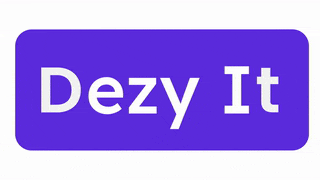6 New AI Scribing Tools for Healthcare Clinics in January 2025
- sia699
- Jan 28
- 2 min read

AI scribing tools are revolutionizing healthcare clinics by automating the documentation process. These tools help physicians reduce administrative workloads, focus on patient care, and improve the overall efficiency of clinical workflows. In this blog, we explore 10 new AI scribing tools launched in January 2025, backed by data and real-world applications.
1. ScribeX
ScribeX uses advanced natural language processing (NLP) to transcribe real-time conversations between doctors and patients. Its seamless integration with electronic health records (EHRs) helps eliminate manual data entry, saving up to 30% of clinic time.
HealthNotes AI offers multilingual transcription capabilities, ideal for diverse healthcare settings. It ensures accurate notes and is particularly useful in clinics with patients speaking multiple languages.
3. DeepDoc
DeepDoc specializes in analyzing patient conversations and automatically generating structured clinical notes. With its ability to classify and prioritize medical data, clinics have reported a 25% reduction in documentation errors.
4. MedSync AI
MedSync AI connects conversational AI with scribing, ensuring that patient interactions are documented while also addressing patient queries in real-time. It is especially effective in streamlining patient triage for doctors.
5. ScribeEase
Designed for small clinics, ScribeEase offers cost-effective AI scribing services. It uses voice recognition to generate accurate medical records and is compatible with various EHR platforms.
CareWriter Pro uses artificial intelligence to summarize long conversations into concise, actionable medical notes. Its focus on reducing repetitive documentation tasks makes it a popular choice among healthcare providers.
Benefits of AI Scribing Tools in Healthcare
AI scribing tools are more than just transcription services. They provide several benefits, such as:
Reduced Administrative Costs: Automation decreases time spent on billing, medical coding, and documentation, cutting overhead costs.
Improved Accuracy: AI minimizes errors in patient records, ensuring better compliance with healthcare regulations.
Enhanced Patient Care: With less time spent on documentation, doctors can focus more on their patients.
AI in Healthcare Examples
The impact of AI in healthcare is evident across various domains:
Conversational AI for Doctors: Real-time assistance during consultations.
Billing and Insurance Support: Automated processing for claims and payments.
Patient Engagement Tools: Predictive analytics for personalized follow-ups.
Challenges in Adoption
Despite the benefits, AI scribing tools face challenges:
Integration Issues: Some tools are not compatible with all EHR systems.
Data Privacy Concerns: Ensuring compliance with HIPAA and GDPR regulations is crucial.
Adaptation Time: Training staff to use new tools effectively can take time.
Conclusion
AI scribing tools like ScribeX, HealthNotes AI, and MedSync AI are transforming healthcare clinics by improving documentation accuracy and efficiency. These tools reduce administrative burdens, lower costs, and allow doctors to focus on patient care. As AI continues to evolve, the adoption of scribing tools will play a vital role in optimizing healthcare delivery in 2025 and beyond.
Learn more:


コメント